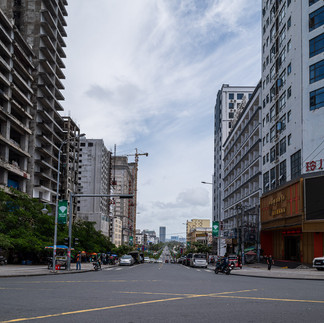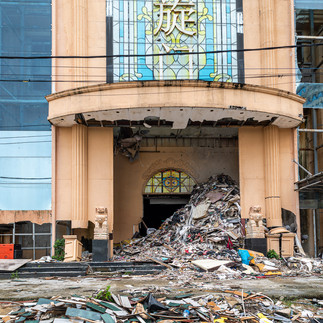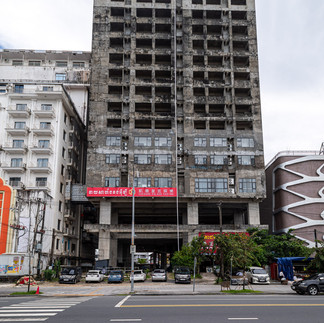The Eerie Stillness of Half-Built Dreams: Urban Blight in Sihanoukville
- Ian Miller

- Sep 3
- 2 min read
There’s a strange quiet that settles over Sihanoukville’s unfinished towers. Steel bones jut skyward, glassless windows stare blankly, and rebar rusts in the tropical air. These are not ruins of a distant past—they are the remnants of a future that never arrived.
Between 2016 and 2019, Sihanoukville was swept into a fever dream of development. Fueled by foreign investment—mostly Chinese capital—the city transformed overnight. Casinos, luxury condos, and high-rise hotels rose from the dust, promising prosperity and global relevance. But when Cambodia banned online gambling in 2019, and the pandemic followed soon after, the dream collapsed. Investors fled. Construction halted. And the city was left with over a thousand unfinished buildings—monuments to ambition, now frozen in time.

The Human Cost of Speculation
Urban blight isn’t just an aesthetic problem. It’s a lived reality for the people who remain. Locals displaced by rising rents now sleep in tuk-tuks or makeshift shelters. Traditional markets and community spaces have been swallowed by concrete. The promise of jobs and opportunity has given way to economic stagnation and social fragmentation.
These skeletal structures loom over daily life, casting long shadows—literal and metaphorical. They signal not just failed investment, but a failure to listen, to plan, to honor place. The city’s identity, once rooted in its coastline and community, now feels suspended between what it was and what it was told it could be.
Blight as Metaphor
For documentarians and educators, urban blight offers more than visual drama—it’s a metaphor for unchecked ambition and the cost of forgetting place. These buildings are not just unfinished—they are unmoored. They lack context, connection, and care. And in their stillness, they ask hard questions: Who benefits from development? Who is left behind? What does progress look like when it erases the very people it claims to uplift?
Toward Ethical Witnessing
To photograph or teach about urban blight is to engage in ethical witnessing. It’s not enough to capture decay—we must also illuminate resilience. The street vendor who sets up beneath a half-built tower. The child who plays in the shadow of scaffolding. The elder who remembers the coastline before the cranes arrived.
Revitalization is possible. But it must begin with listening—with honoring the stories of those who live among the ruins. Urban renewal cannot be imposed; it must be co-authored.
Closing Thought: Sihanoukville’s unfinished buildings are not just failed projects. They are cautionary tales. And perhaps, if we pay attention, they can become classrooms—places where we learn to build differently. Not higher. But deeper.




























Comments